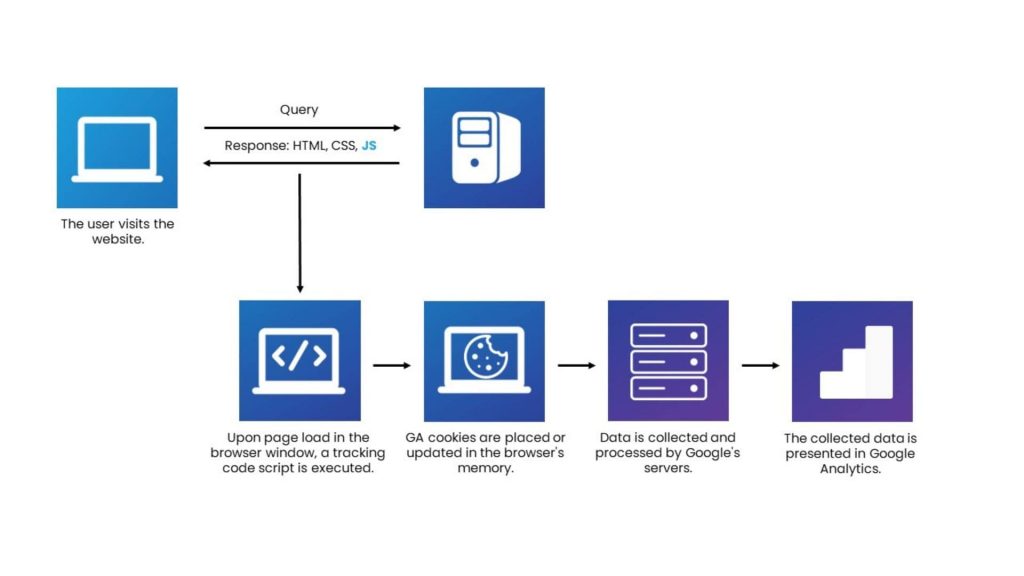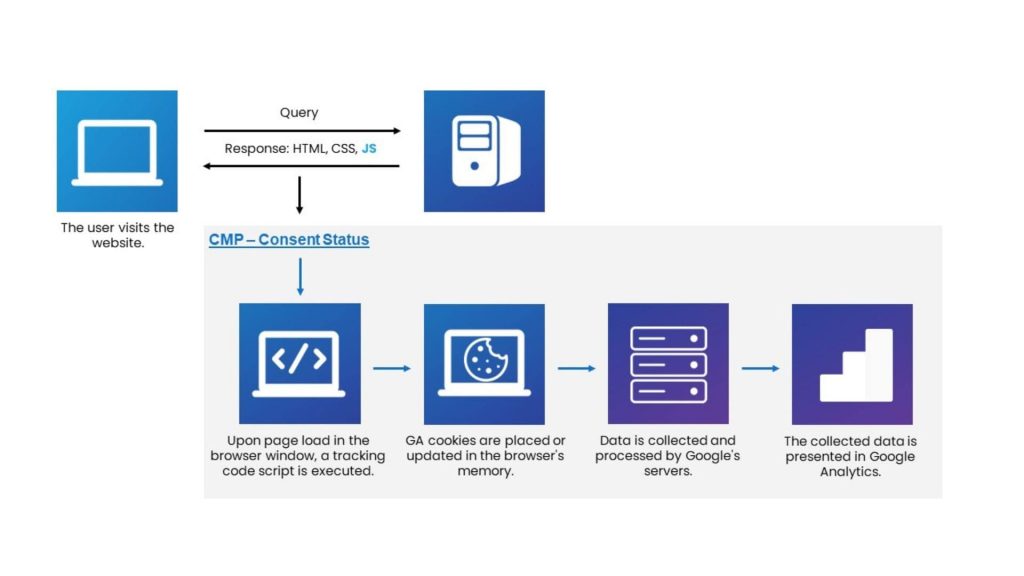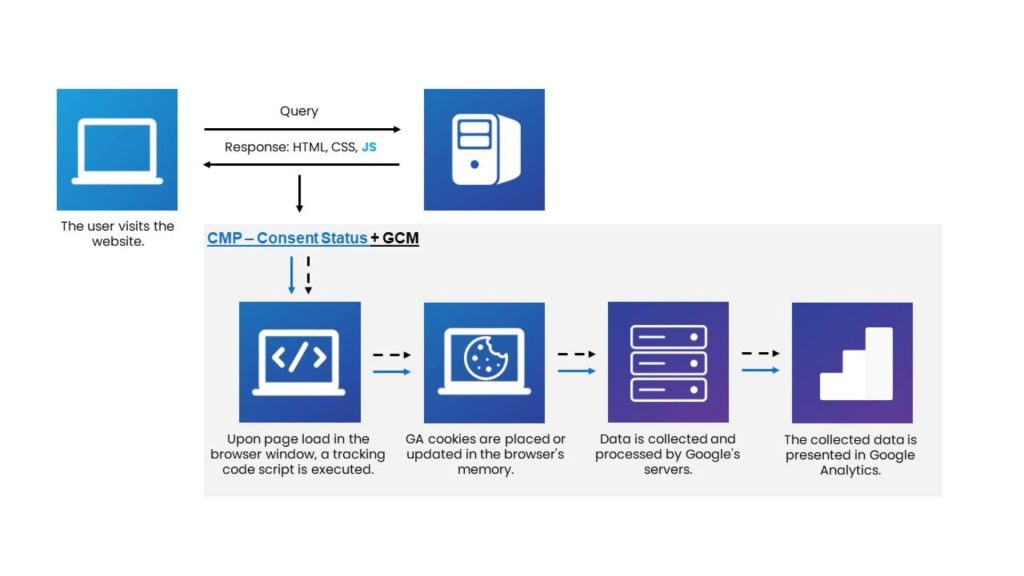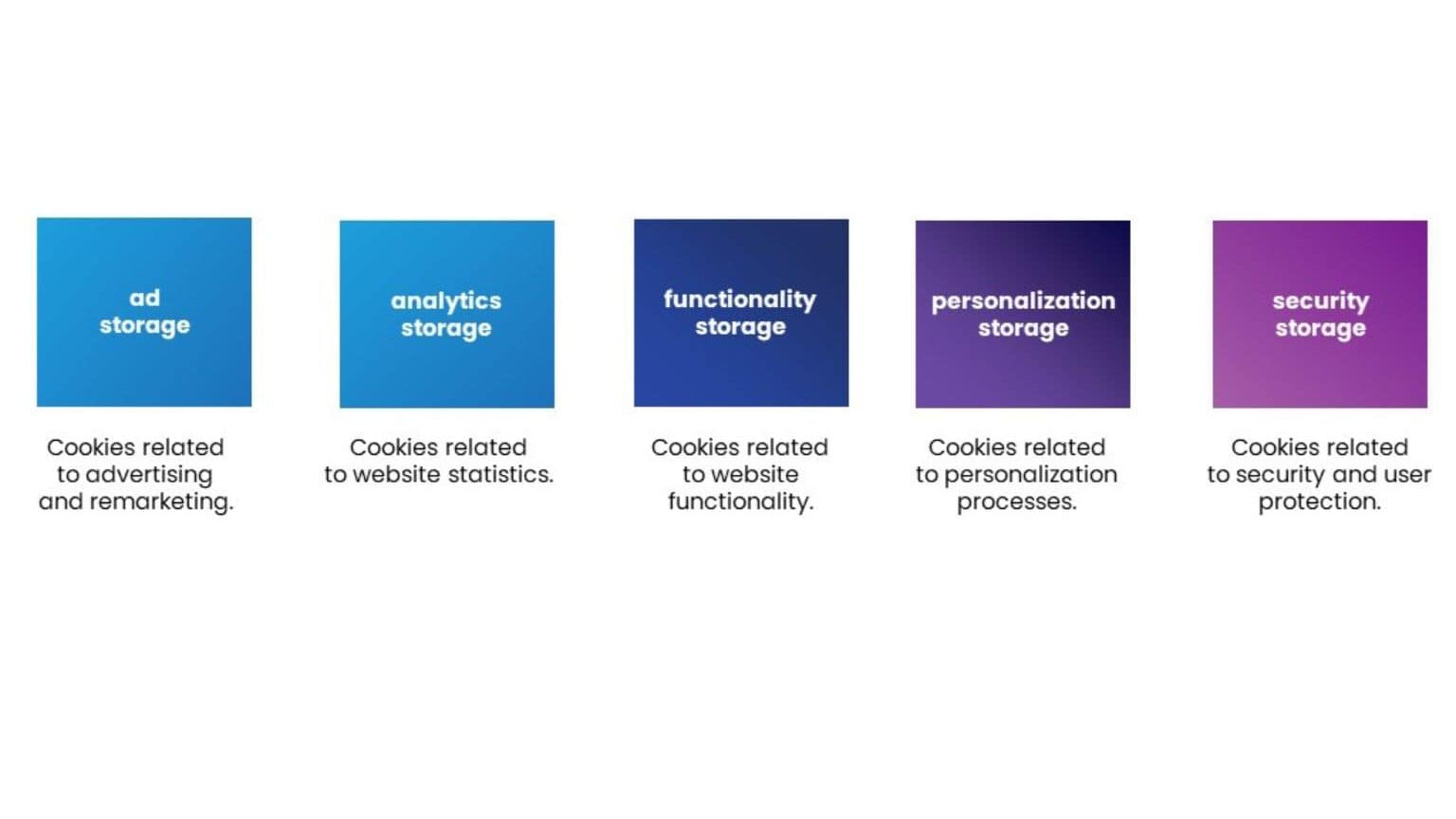Can you imagine a world without cookies? Even if you cannot, the “cookieless” reality is becoming inevitable. Marketers often consider this prospect their biggest nightmare, as cookies provide vital information and data (such as user behaviour insights) that support crucial business decision-making. However, with the introduction of more strict regulations and changes to cookie usage by browsers, the landscape is shifting. Having gaps in user information throughout the customer journey poses challenges to data-driven decision-making. So, how can you efficiently and lawfully collect user data? Our article delves into this topic.
CMP in the World of Cookies
One of the approaches for monitoring user consent behaviour involves leveraging cookie consent management platforms. These platforms, known as consent management platforms (CMPs), ensure the proper transmission of cookie consent information to scripts responsible for tracking user website behaviour. Activating CMP tools depends on the users’ consent, allowing or disallowing their operation accordingly.
However, a well-configured CMP tool alone is not enough. While activating the consent collection function, we cannot control the users’ consent to collect their information.
To enhance the CMP configuration, Google has introduced a feature called Google Consent Mode, which enables the conditional execution of analytics tags. These tags operate in a manner that does not store cookies. Instead, they provide statistical data about website visits and conversion events. This approach allows for bridging data gaps concerning actual user behaviour by incorporating modelled data regarding visitors. As a result, this solution provides insights closer to reality, unlike when we cannot access specific data.
Here is a list of Google tags that come equipped with built-in mechanisms for checking user consent and adjusting their functionality accordingly:
- Google Analytics
- Google Ads
- Fleedlight
- Conversion Linker
Cookie-Based Data Collection Process
- The user visits a website.
- As soon as the user enters the website, a tracking code embedded on the site begins gathering information on the user’s activities.
- The collected data is then transmitted in real-time to third-party servers, such as Google Analytics, where it undergoes processing before being presented as reports accessible through external dashboards.

Cookie-Based Data Collection Process + CMP
- The user visits a website.
- As the page begins to load, a Cookie Consent Banner is displayed, offering options for the user to choose which cookies they consent to upon accessing the site:
- By default, if the user has not made a choice yet, the consent is set to refuse mode.
- If the user closes the banner without making a choice, the consent remains in deny mode by default.
- When the user consents to a specific category of cookies, the consent mode changes to ‘granted’.
- Only when the user gives their consent does the tracking code implemented on the website begin collecting data on the user’s activities.
- The collected data is then transferred to third-party servers, such as Google Analytics, where it undergoes processing before being presented as reports accessible through external dashboards.

Cookie-Based Data Collection Process + CMP + GCM
- The user visits a website.
- As the page begins to load, a Cookie Consent Banner is displayed, offering options for the user to choose which cookies they consent to upon accessing the site:
- Until the user makes a choice, the default consent mode is set to refuse (except for Google tags, which run conditionally and provide anonymous analytical data);
- If the user closes the banner without making a choice, the consent mode remains in the default refuse mode (excluding Google tags);
- When the user consents to a specific category of cookies, the consent mode changes to “granted”.
- In case of no consent, only the tracking code from Google implemented on the website starts collecting anonymous analytical data about the user’s activities.
- The collected data is transferred to third-party servers, such as Google Analytics, where it undergoes processing before being presented as reports accessible through external dashboards.

What is a Consent Management Platform (CMP)?
Cookie consent management platforms ensure cookies activate only on a website with the user’s explicit consent and knowledge. By doing so, they help businesses comply with legal regulations concerning user privacy. Additionally, these platforms offer mechanisms to aggregate cookie consents and allow users to modify their choices or, if needed, delete their data entirely.
The reasons for implementing CMPs:
- Compliance with privacy-related regulations;
- Enhanced control over user behaviour data processed on the site;
- The improved trust of site visitors.
Why use the Consent Management Platform?
According to legal requirements, websites that utilize cookies must obtain user consent before activating cookies that are not essential for the website’s operation.
You can collect information using tools like Google Analytics, Adobe Analytics, Piwik PRO, Matomo, Google Ads, Floodlight, Facebook Pixel, LinkedIn Insight Tag, or Google Optimize. To utilize it, though – it is necessary to retain the consent selection settings based on the user’s initial interaction with the website. We must help the user understand enough to make an informed decision about their consent. Consent management platforms simplify this process by categorizing cookies from third-party providers into specific groups based on their respective types:

Furthermore, it is crucial to allow users to modify their decisions easily or withdraw previously granted consent throughout the process – consent management platforms also provide this essential functionality.
Examples of legal bases for implementing consent management platforms include:
- GDPR (General Data Protection Regulation): applies to European Union (EU) companies and residents.
- CCPA (California Consumer Privacy Act): specific to California, United States, residents.
- VCDPA (Virginia Consumer Data Protection Act): applicable to companies and residents in Virginia, United States.
Benefits of Implementing Consent Management Platforms
Before delving into the advantages of implementing a consent management platform, it is essential to acknowledge the privacy challenges that online businesses encounter. These challenges include:
- Choosing the right approach to collecting and utilizing user data.
- Lack of clarity and transparency in the privacy policy information.
- Evolving privacy regulations and laws.
These examples serve as reminders of how easily organizations can fall into the trap of data protection mistakes. Even with extensive knowledge in the field, oversights can occur, resulting in severe consequences. Recently, there have been numerous privacy breaches, with responsible organizations facing significant legal and financial repercussions. Implementing a consent management platform can protect businesses against user privacy mistakes by offering a range of benefits. These benefits extend not only to organizations but also to users themselves.
User benefits
CMP is a tool that grants users complete control over the data they choose to share with the websites they visit. It enables users to decide which providers can activate cookies and the specific types of cookies involved. Moreover, users can consent to essential cookies solely, which are necessary for the proper website functioning. By utilizing CMP, users feel secure and can protect their privacy. Additionally, they can change their consent decision or withdraw it at any time, maintaining control over their data and privacy.
Benefits brought to users by implementing CMPs
- Greater transparency and control over the triggering of cookies.
- Easy consent management.
- Flexibility to change consent preferences.
- Privacy protection.
Organizational benefits
The consent management platform offers numerous advantages to organizations. Firstly, it aids in ensuring compliance with privacy regulations such as the General Data Protection Regulation (GDPR). By implementing a consent management platform, organizations can minimize the risk of data breaches and foster customer trust through transparent and responsible management of cookies, which may contain valuable insights into user behaviour.
Organizational benefits of implementing CMPs:
- Minimizing risk associated with processing data in cookies without proper user consent.
- Building customer trust in the brand.
- Improving the company’s image.
- Effective consent and preference management.
- Increased transparency in terms of cookie consent.
We are releasing the second part of this article soon, where you will learn more about the CMP implementation and recommended tools. Follow our social media channels not to miss it.
FAQ
What is a consent management platform?
A Consent Management Platform (CMP) is a software that aids in the collection and management of personal information and user consents, ensuring compliance with data protection regulations. It automates consent processes, secures permissions for cookie usage and data tracking, and facilitates easy user preference updates.
Who needs a consent management platform?
Consent management platforms (CMPs) are crucial for any online entity employing data-intensive strategies, such as websites and apps using cookies or tracking technologies, to legally manage user consent before collecting, sharing, or selling user data.
What is an example of consent management?
An example of consent management under new cookie policy directives involves a clear, specific, and understandable cookie notice on a website or app. This notice appears upon the user's first visit and includes: 1) A detailed cookie policy, 2) An option for users to consent to cookies, and 3) Preferences allowing users to accept or deny different cookie categories. Importantly, users must actively opt-in, with checkboxes left unchecked by default for GDPR compliance.






